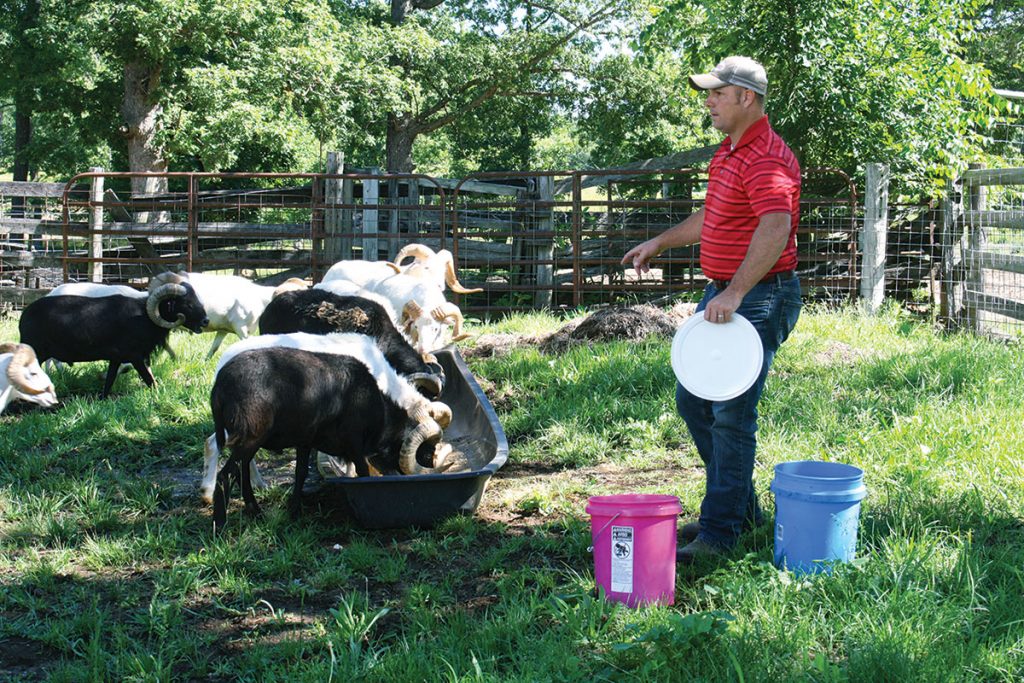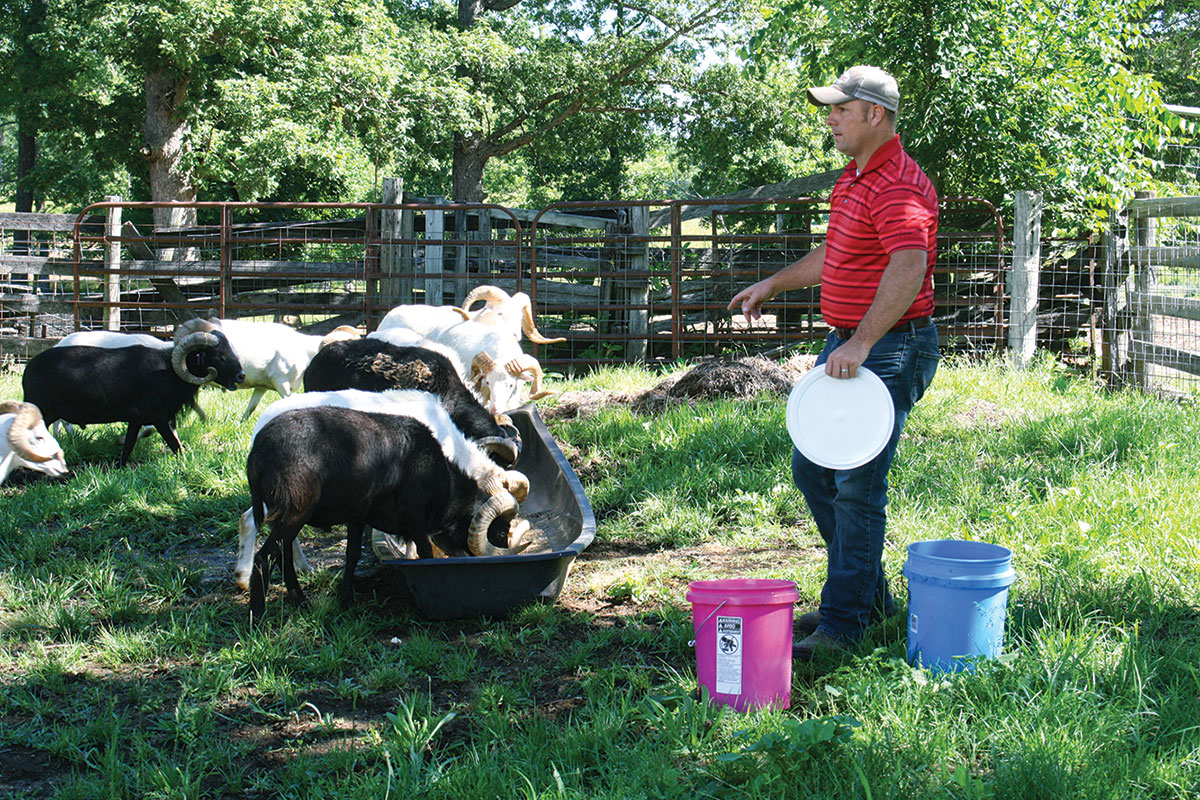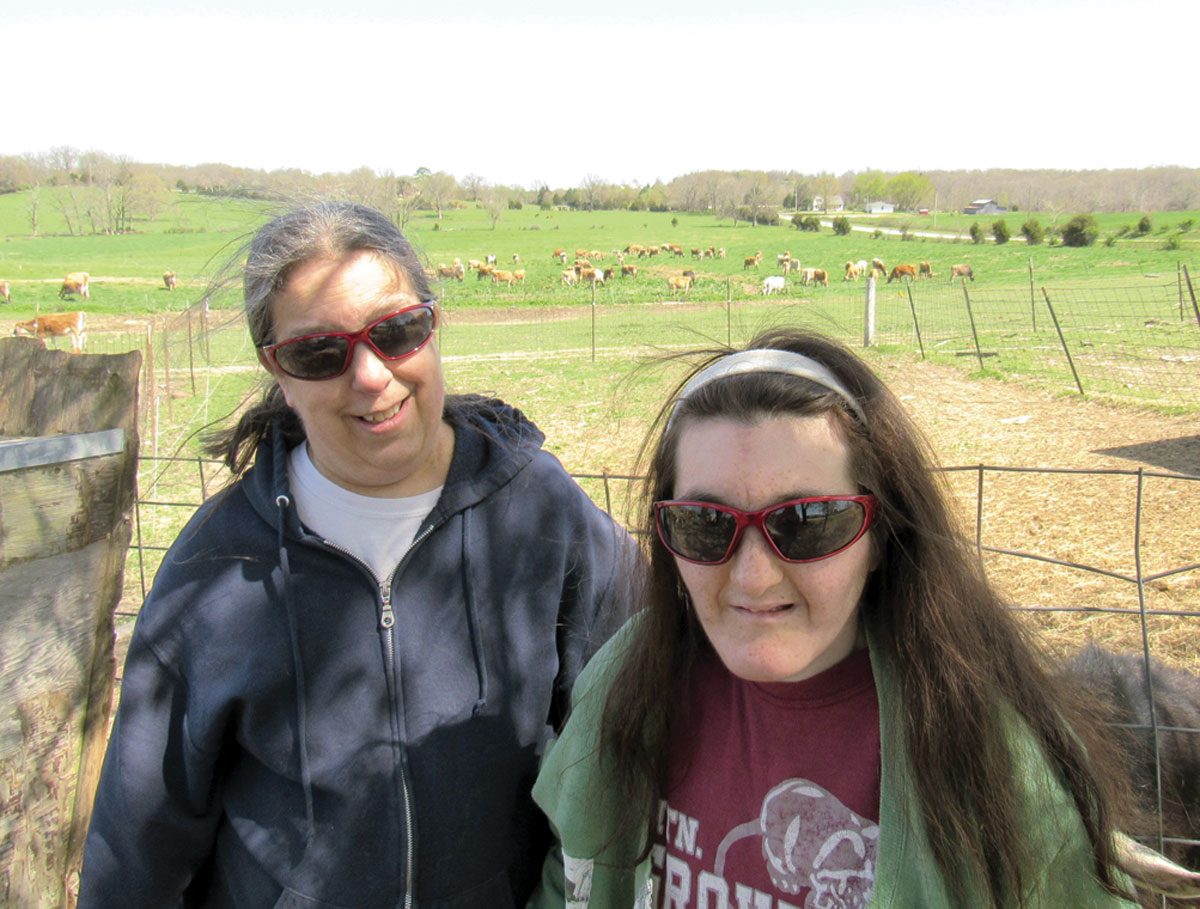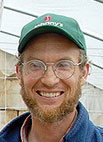
It took a little prodding, but Brad Shockley’s brother Buck finally convinced him to go on a hog hunt in Oklahoma.
Little did Brad know the weekend trip would turn into a new agricultural venture.
“While we were there, we saw a couple of sheep and the guy at the ranch said he couldn’t get enough of them,” Brad said, adding that the increased ethnic population seeking meat sheep, drove the price for the trophy animals up. “I came home and started looking them up.”
In addition to his growing cattle operation, the Buffalo, Mo., producer started a Texas Dahl and Hawaiian Black sheep, which are bred for horn stock, six years ago.
Once a buck lamb is born, it takes about three years for their horns to develop. Most rams are sold to hunting ranches in Oklahoma and Texas.
“My goal is to raise a Gold Emblem Ram. It’s easy to raise one to 30 inches, which is the measurement from the skull to the tip, but the Gold Emblems start at 34 inches and it’s hard to get them to 34. Anything over 36 inches is considered a trophy. My goal is to sell everything over 34 to 36 inches, and most of the time I can do that.”
Raising a ram with the proper horn growth is where the challenge comes in.
“They aren’t easy to raise,” Brad said. “There’s a reason why sheep have twins. It’s a challenge because it’s different than cattle. If they get a little stunted or get a few parasite problems when they are younger, they might not reach that goal. It boils down to genetics and nutrition.”
To learn more about sheep production, Brad began researching how he could incorporate the sheep onto his farm.
“All livestock need forages, and if I want to keep them healthy, disease-free and parasite-free, I have to give them a quality forage,” Brad said. “In Missouri, we’re known for fescue, blackberry briers, cedar trees and brush.”
Brad began converting the fescue-based pastures on the farm be bought four years ago to orchard grass, Timothy or white clover, and improving soil fertility.
“I’m also looking at millet for grazing in the summertime,” Brad said. “If I can put in 5 acres of millet, I can graze 100 sheep virtually all summer.”
Sheep also do well on turnips and other alternative forages, and he has established a rotational grazing system for his flock.
In the winter months, sheep are offered high-quality hay, which Brad produces on his farm. During extreme cold, the sheep are fed Triticale or Sudan silage.
“The Triticale works well because it has a smaller stem, and once Sudan goes through the process of becoming silage, they eat it a lot better,” he explained.
Working with a nutritionist, Brad has also developed a grain ration, which includes ingredients such as corn and alfalfa pellets, but the main diet remains forage-based.
“God meant animals to eat forages, not grain,” Brad said. “I don’t feed a tremendous amount of gain, but I feed some. That also gives me the opportunity to administer dewormers because they are wild and are not easy to handle, which is why we have 8-foot fences. If we can work parasite control into the feed, that helps. Feeding a high-quality forage year-round will help keep some of the typical sheep problems away. Sheep have feet problems, and I had several problems with that until I figured out that high-quality forage is key. Sheep are doing to have parasites, that’s just the way it is, but if you can keep their system healthy, a healthy immune system will fight things off. I do the same thing with my cows. They might be grazing fescue, but I try to add clover in the pastures and graze them on Sudan in the summer. I feed them silage and high-quality hay, then they don’t need as much mineral because they are getting what they need in forages. The sheep are the same way in that they get what they need naturally, then their system digests it better and their system is healthier.”
Brad admits he’s “picky” about forages. He holds a degree in agriculture education and said he did do a little more emphasis in plant science and horticulture.
“When I do hay, my dad or other friends will come over and look at the hay and think it looks great, but I’m looking at the handful of weeds I haven’t been able to get rid of, and I’m looking at what we can do,” Brad said. “I’m very particular about forages. If animals have potential, you can hinder them from reaching that potential if you don’t have good genetics and nutrition. You have to check every box and check everything off to reach their potential. When I first bought sheep, they were use to eating what they could find in South Texas, which was hill country. At first, they wanted to eat the weeds, and we were fighting Sericea lespedeza, which they cleared up at my dad’s. Now, as I have them acclimated and I’m feeding them millet, Sudan and other forages, I can put a bucket of grain in a trough, but if I take in a bale of hay and bust it open, they will leave the grain for the hay.”
While he is adamant about his forages and nutrition for overall health, the sheep are vaccinated and feet are trimmed as needed. Ewes and lambs are ran through a working system, but as the rams mature, it requires a more hands-on approach. Because of the horns, Brad must catch and hold each ram individually, which weigh about 100 pounds at maturity.
Brad admits things did not go smoothly when he initially started the sheep portion of his operation. He called it his “learning period,” but was able to connect with a fellow breeder and veterinarian in Texas, who helped Brad learn more about the industry, and answer any questions about health issues.
“He was critical for me those first couple years,” Brad said.
At breeding time, the flock, which consists of between 80 and 100 ewes, is split according to breed. All ewes are brought together for lambing.
“I will turn my rams in about now, and as long as it doesn’t get too hot, too quick they will breed,” he said. “I love to lamb from about Thanksgiving to Christmas. If I can get my lambs on the ground before the first of the year and it gets really cold, they are pretty resilient. Instead of lambing in the spring, this allows me to provide silage to the ewes while they are milking. Instead of getting sucked down and losing weight, they stay in good shape and it gives the lambs a good start.”
He added lambing in November and December, opposed to the spring, also gives him additional time to grow his rams and offer them at different times of the year than other growers.
Animals not developing up to Brad’s standards, or failing to thrive, are typically sold at an alternative livestock market, or the local sale barn.
“If they don’t have a full-body, that spring of rib, the depth or a good set of feet and legs, or if they are shorter and different from everything else, they are culled,” he said.
A ewe’s first two lambings, generally, produce singles, then twins thereafter. Triples are not uncommon, and the smaller lamb is pulled and fed on the bottle. Orphaned lambs are reared by the Shockley family, much to the delight of his young daughters, but are not retained.
Ewe lambs are retained for future breeding, replacing older, unproductive ewes in the flock. Ewes are placed into the breeding flock at about 8 months of age.
“Every year, we should be getting better and producing better genetics,” Brad said. “The intention is to have higher-quality sheep, so the younger generation should have better genetics, if I’m doing my job right, and should be better than the older stock.”
He produces his own breeding rams as well, but is careful not to use a male as a stud ram until 3 years of age.
“They will breed as young as 9 months, but it will stunt their growth,” he said adding one of his Black Hawaiian rams should have larger base development. “I used him when he was about a year old for breeding, instead of focusing on growing, so he didn’t grow out like he had the potential.”
The addition of the Texas Dahls and the Black Hawaiian sheep was a way Brad to add diversity to his farming operation, and provide an in-demand product.
“I looked at it from a perspective of I love to farm; it doesn’t matter what kind of farming,” Brad said. “Forages and hay are probably my favorite things, and I enjoy the cattle as well, but when you look at the financial aspect of it and the rising land cost, which is only going to get worse, it’s a challenge to be able to make farming financial feasible. When you sit down and put pen to paper, it makes sense.
“In Southwest Missouri, we say 2 1/2 acres or 3 to 3 1/2 acres for a cow. You can run seven ewes on what you can run a cow on. I love the cattle industry and regardless if it’s my sheep, my cattle or anything else, you have to have your pasture and hay correct. I think the biggest mistake producers in Southwest Missouri make, regardless of what they are producing, is the quality of their forages is not up to par. Problems they are having and the lack of profitability can be traced back to forages.”







